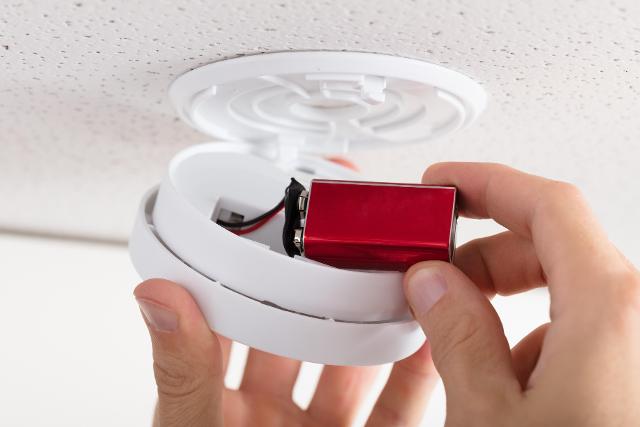
SPRINGFIELD - As Illinoisans turn up their thermostats to stay warm the rest of this winter the risk of a home heating fire or Carbon Monoxide incident increases. This is why the Office of the Illinois State Fire Marshal (OSFM) encourages residents to have their furnaces checked, change furnace filters, and make sure carbon monoxide (CO) and smoke alarms are functioning properly. Unlike smoke, carbon monoxide is a colorless and odorless gas only detectable by special devices and CO alarms.
Get The Latest News!
Don't miss our top stories and need-to-know news everyday in your inbox.
According to the National Fire Protection Association (NFPA), heating equipment is one of the leading causes of home fire deaths. Fire departments responded to an estimated average of 44,210 fires involving heating equipment per year from 2016-2020, accounting for 13% of all reported home fires during this time, and these fires resulted in annual losses of 480 civilian deaths. Space heaters were the type of heating equipment responsible for the largest shares of losses in home heating equipment fires, accounting for one-third of the fires, but nearly nine out of ten deaths and four out of five of the injuries in home fires caused by heating equipment. Half of the home heating fire deaths were caused by having heating equipment too close to things that can burn, such as upholstered furniture, clothing mattresses or bedding. Nearly half of all home heating fires occurred in December, January, and February.
“During the winter months we see an increase in home fires caused by heating deceives or malfunctioning heating equipment. Today, contents inside homes burn hotter and faster than ever before leaving less than 3 minutes for your family to escape. This is why testing smoke and CO alarms monthly, checking expiration dates and replacing broken alarms is the best way to help prevent a fire death from occurring,” said Illinois State Fire Marshal James A. Rivera. “It’s simple, Working Smoke Alarms Save Lives!”
In 2023, according to the National Fire Incident Reporting System (NFIRS), Illinois Fire Departments responded to 21,165 calls about carbon monoxide. They were able to determine a CO leak at 8,823 of those locations.
Symptoms of CO poisoning are very similar to the flu and include headache, fatigue, shortness of breath, nausea, and dizziness. Other signs of possible CO presence include condensation on walls and windows, house pets becoming sluggish and chronic odors from malfunctioning appliances. If you suspect you may be experiencing these symptoms, smell natural gas leaking in your home, or if your CO alarm activates, if you can evacuate the building, do so immediately. Only open windows on your way out if they are easily accessible. If someone is unable to leave the building, or is unconscious, open doors and windows to the outside in the area the person is located and stay as near to the open window or door as possible until first responders arrive. Turn on any exhaust fans that may be present. Once you evacuate, call 9-1-1 from outside your home or a neighbor’s house.
Here are some other tips to keep in mind when it comes to winter heating safety:
- Have heating equipment and chimneys cleaned and inspected every year by a qualified professional and change furnace filters frequently.
- Have a qualified professional install stationary space heating equipment, water heaters, or central heating equipment according to the local codes and manufacturers’ instructions.
- Keep interior and exterior air vents clear of blockages or obstructions.
- Keep anything that can burn at least three feet away from heating equipment, like a furnace, fireplace, wood stove, or portable space heater.
- Purchase units with an automatic shutoff in case the unit tips over or you forget to shut it off.
- Make sure the fireplace has a sturdy screen to stop sparks from flying into the room. Ashes should be cool before being placed into a metal container. Keep the container a safe distance away from your home.
- Create a three-foot “kid-free zone” around open fires and space heaters.
- Test smoke and CO alarms at least once a month and be familiar with the sounds they make.
- Never use an oven or range to heat your home.
- Remember to turn off portable or space heaters when leaving the room or going to bed.
- Install carbon monoxide and smoke detectors on each floor of your home and within 15 feet of each sleeping area.
- CO detectors have a limited life span; check the manufacturer’s instructions for information on replacement.
More like this:
Send your news tips to news@edglentoday.com or on twitter @EdGlenTodayNews

